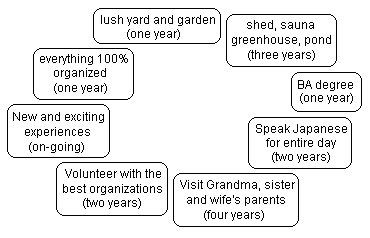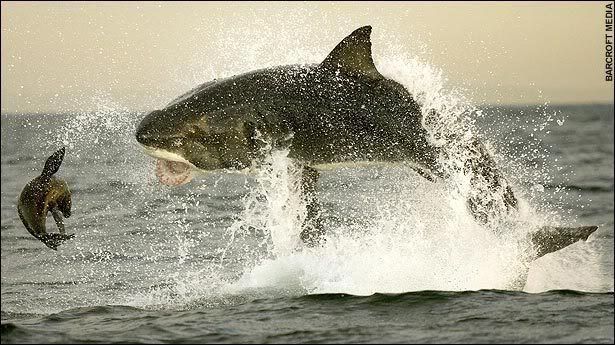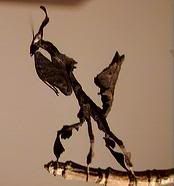After
reading that five hundred words is the minimum needed for basic communication, I wanted to learn which 500 words are the most important, or frequently used, so that I can focus on learning those first, then move on from there. At the local bookstore, I found a book by Boye De Mente that claimed to contain "100 key words" in Japanese. Here they are:
Words 1-10:
Good Morning おはよう ございます
Good Afternoon こんにち は
Good Evening こんばん は
Thank you very much どうも ありがとう
Pardon me, excuse me, I am sorry, thank you すみません
Please (after you) どうぞ
Please ( - give me) ください
Water みず
I わたし
I (formal) わたくし
Words 11-20
to me わたしに
my, mine わたしの
we/our, ours わたしたち
am, is, are です
am not, is not, are not で は ありません
was, were でした
was not, were not で は ありません でした
name なまえ
what なん / なに
you/ your, yours あなた
(two additional words, a typo in the book):
an American person or American people
a Japanese person or people
Words 21-30
who/ whose どなた
this これ
that それ
he, she, him, her/ his, hers あの ひと
message メッセージ
when いつ
where どこ
yes はい
Yes, that's so, that's right そう です
no いいえ
Words 31-40
to go (plain) いく
hotel ホテル
to eat たべる
food, meal しょくじ
Japanese food わしょく
Western food ようしょく
to drink のむ
like (be fond of, love) すき
to receive, accept いただきます
(it is) delicious おいしい
Words 41-50
to meet あう
what time? なんじ
To be, have (for objects) ある
how much いくら
high, expensive たかい
cheap, inexpensive やすい
to do する
good (fine, acceptable) いい
which (of two) どちら
which (of many) どれ
Words 51-60
small, little ちいさい
large, big おおきい
number one, most いちばん
to send, mail だす
here ここ
to stop (come to rest). To stay (overnight). とまる
To wait まつ
to come くる
to buy かう
shopping かいもの
Words 61-70
money おかね
to have もつ
to call (out to someone, call a taxi, etc.) よぶ
telephone でんわ
to write かく
to be able to do, can do できる
today きょう
tomorrow あした
English えいご
Japanese にほんご
Words 71-80
how many いくつ
to need, want いる
to understand, to know, to be clear わかる
number/ numbers ばん / ばんごう
one person ひとり
two persons ふたり
three persons さんにん
four persons よにん
time, hour じかん
minute, minutes ふん / ぷん
Words 81-90
morning (AM) ごぜん
afternoon (PM) ごご
taxi タクシー
subway, metro, underground ちかてつ
train でんしゃ
station えき
near ちかい
Bullet train しんかんせん
hot (weather and to the touch) あつい
cold (weather), to feel cold さむい
Words 91-100
cold (to the touch) つめたい
coffee コーヒー
milk ミルク
rain あめ
snow ゆき
to fall, come down ふります
sick びょうき
doctor いしゃ
to walk あるく
far, distant とおい
Special Set Phrases:
Welcome! いらっしゃいませ。
I'm home! ただいま。
Welcome back (home)! おかえり なさい。
I am intruding. Excuse me. おじゃま します。
I have intruded. I have bothered you. Goodbye. おじゃま しました。
Excuse me. I'm sorry. しつれい します。
Sorry for disturbing (bothering) you. しつれい しました。
I receive, accept (the food, drink). いただきます。 (duplicate of word 39 above)
It was nothing. おそまつさま。
Thanks to you. Thank you for asking. おかげさま で。
Thanks for all your hard work. Well done. ごくろうさま でした。
Please (do something for the speaker). I beg of you. おねがい します。 / おねがい いたします。
Please (do something for the speaker) (very polite). よろしく おねがい します。
Common Everyday Expressions:
How are you? Are you well? おげんき です か。
I'm fine. And you? げんき です。 ...さん は。
The weather is fine, isn't it! おてんき は いい です ね。
Just a moment, please. (polite) しょうしょう おまち ください。
Just a second! Hang on! (informal) ちょっと まって。
Don't mention it. You're welcome. どう いたしまして。
Pleased to meet you. はじめまして。














 The predator's mind is always fixed on its prey. It's senses are tuned to seek it out. It's body is ready to attack it. "I will not be robbed of the joy of victory. Success will be mine."
The predator's mind is always fixed on its prey. It's senses are tuned to seek it out. It's body is ready to attack it. "I will not be robbed of the joy of victory. Success will be mine." 